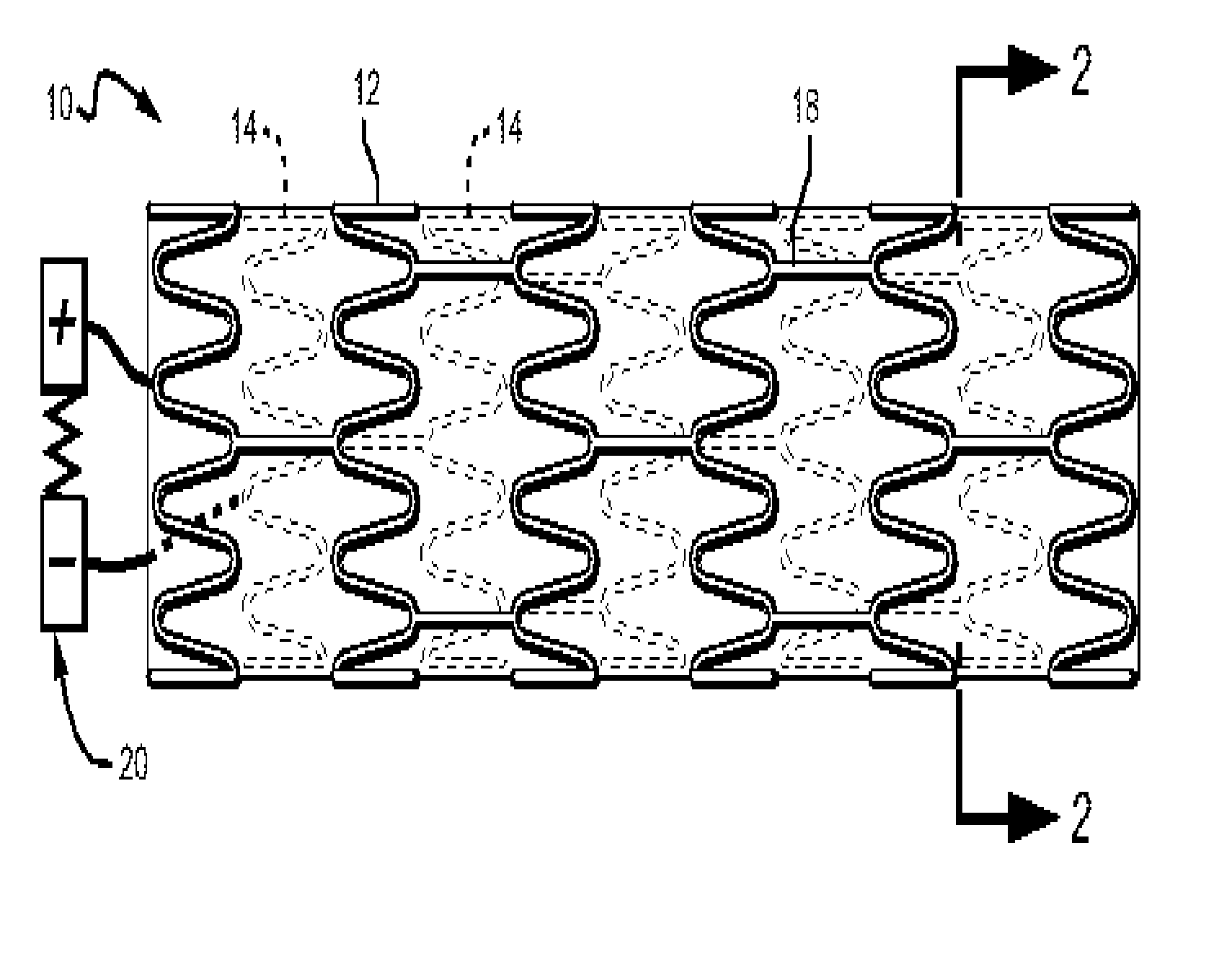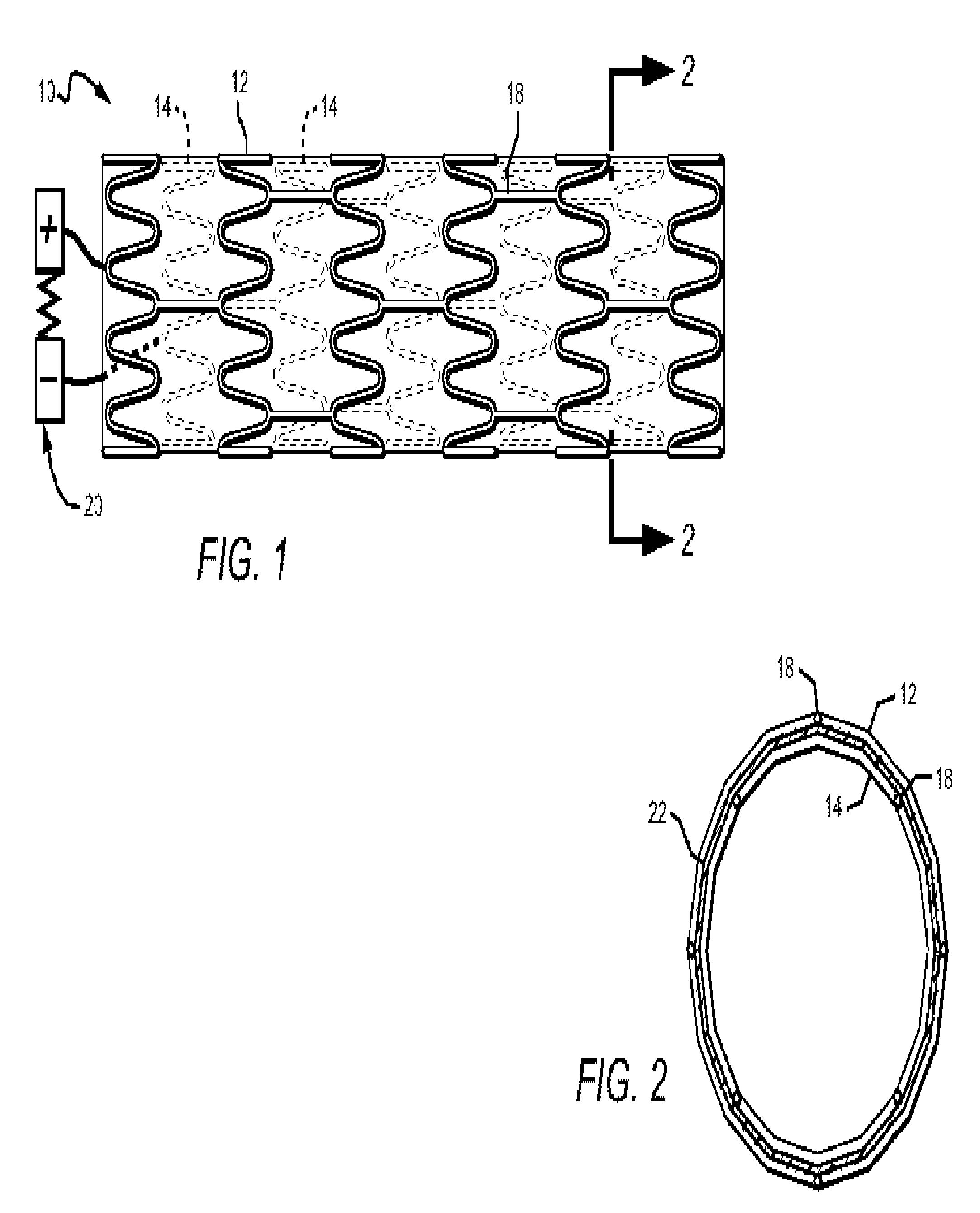Electronic Anti-coagulation stent for intra-arterial deployment
a technology of anticoagulation stent and electrode, which is applied in the field of electrode, can solve the problems of unacceptably short time, complex application of current, and never delivered current to a deployed stent, and achieve the effect of allowing adequate maneuverability of the css
- Summary
- Abstract
- Description
- Claims
- Application Information
AI Technical Summary
Benefits of technology
Problems solved by technology
Method used
Image
Examples
Embodiment Construction
[0034]FIG. 1 provides a schematic side view representation of my coaxial stent structure 10 which comprises an outer stent 12 and an inner stent 14. Stents 12 and 14 are each comprised of a plurality of rings which are sinusoidal in configuration and thus capable of outward expansion. The rings of each stent are connected to adjacent rings by stems 18.
[0035] When the stent structure is deployed, battery 20 becomes operatively connected, its positive terminal connected to outer stent 12 and its negative terminal connected to inner stent 14 upon deployment. It is to be understood that the position of battery 20 illustrated in FIG. 1 is shown to simplify explanation. In the preferred embodiment, battery 20 is preferably physically attached as part of the stent structure near or adjacent the upstream end.
[0036] As best seen in the cross-sectional view of FIG. 2, coaxial stent structure 10 further comprises an insulation layer 22 to prevent conductivity between stents 12 and 14. Insula...
PUM
 Login to View More
Login to View More Abstract
Description
Claims
Application Information
 Login to View More
Login to View More - R&D
- Intellectual Property
- Life Sciences
- Materials
- Tech Scout
- Unparalleled Data Quality
- Higher Quality Content
- 60% Fewer Hallucinations
Browse by: Latest US Patents, China's latest patents, Technical Efficacy Thesaurus, Application Domain, Technology Topic, Popular Technical Reports.
© 2025 PatSnap. All rights reserved.Legal|Privacy policy|Modern Slavery Act Transparency Statement|Sitemap|About US| Contact US: help@patsnap.com


